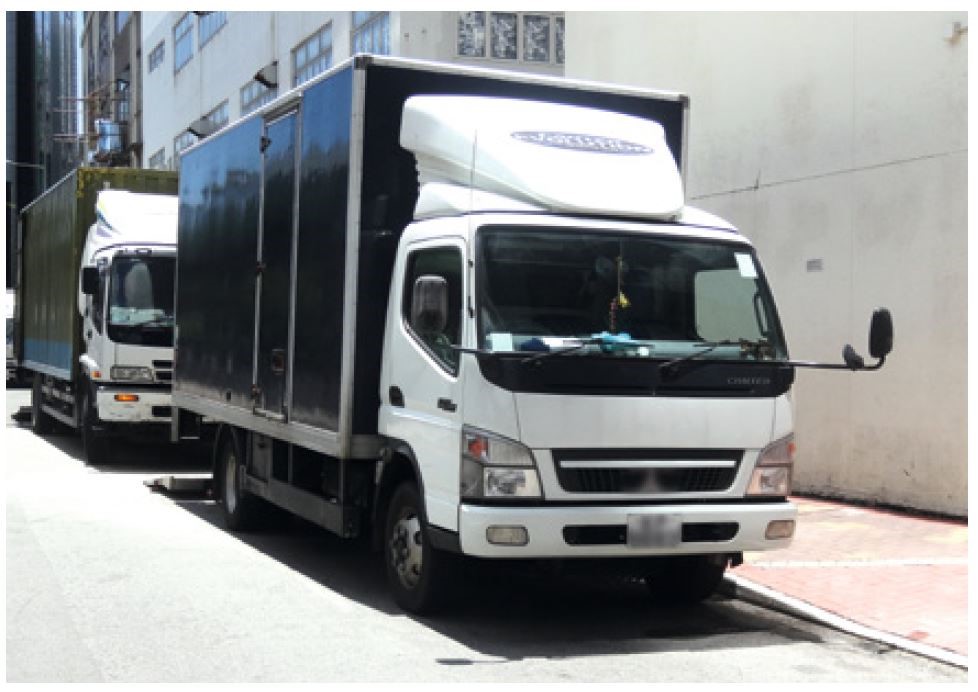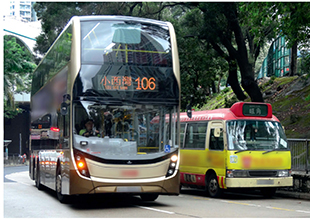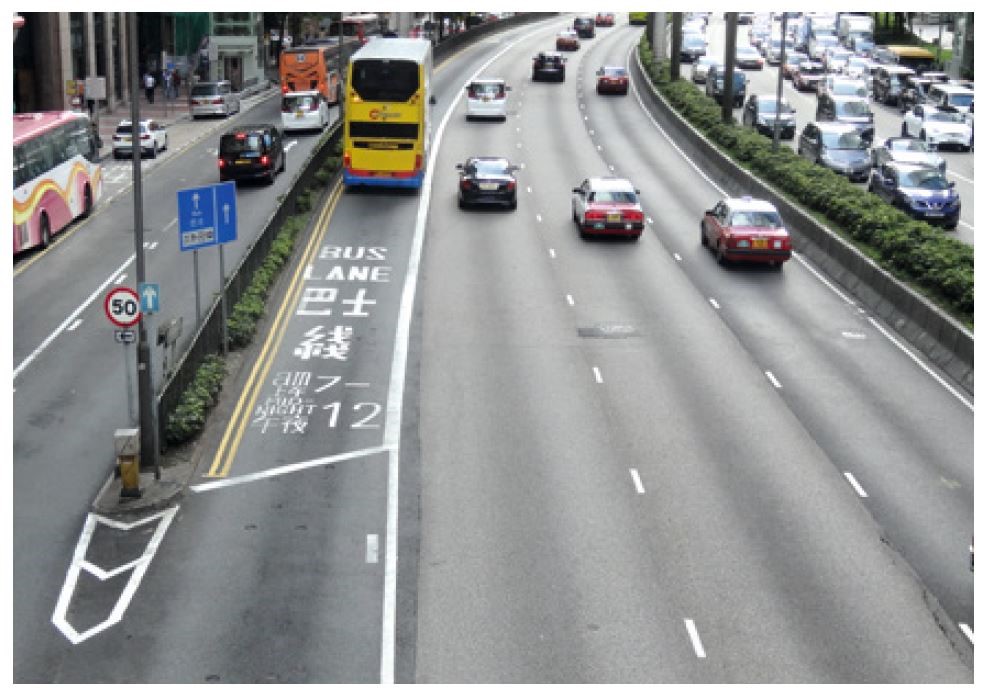 The maximum speed limit for medium and heavy goods vehicles is 70km/h. You must not drive faster than the speed limit for the road or your vehicle, whichever is the lower.
The maximum speed limit for medium and heavy goods vehicles is 70km/h. You must not drive faster than the speed limit for the road or your vehicle, whichever is the lower.Most of the rules and advice given to drivers in chapter 5 apply to drivers of commercial vehicles.
To drive a commercial vehicle , you must have a valid driving licence for the appropriate vehicle class. To apply for a driving licence of relevant commercial vehicle class, you must be aged at least 21, have held a full driving licence for a private car or light goods vehicle for at least 3 years (or at least 2 years if the full driving licence was issued after the completion of probationary driving period) immediately preceding the application, and have not been convicted of dangerous driving causing death (or grievous bodily harm), drink or drug driving within 5 years immediately preceding the application.
With effect from 1 October 2020, the requirement on the number of years of holding a valid private car or light goods vehicle full driving licence would be changed to at least 1 year (or having obtained the full driving licence after the completion of probationary driving period).
Further details on the requirements and application for the different types of driving licences for and driving tests of commercial vehicles may be obtained from any Licensing Office of the Transport Department (See 'Further Reference Materials').
| In general, the heavier the vehicle, the longer the braking distance. For a heavy vehicle, the braking distance may be twice of the distance needed by a car. So keep a longer distance between your vehicle and the one in front (see pages 54 and 55). |
Goods vehicles
 The maximum speed limit for medium and heavy goods vehicles is 70km/h. You must not drive faster than the speed limit for the road or your vehicle, whichever is the lower.
The maximum speed limit for medium and heavy goods vehicles is 70km/h. You must not drive faster than the speed limit for the road or your vehicle, whichever is the lower.
Under the Road Traffic (Expressway) Regulations, medium and heavy goods vehicles are prohibited from using the right most lane of an expressway where there are three or more lanes available, unless you are heading for a right side exit.
The above restriction also applies to light goods vehicles driven by holders of probationary driving licence.
Dust, mud, oil and other debris blown off or dropped from a vehicle can be an inconvenience or a danger to other road users. You must properly secure a load - cover it if necessary. Always keep your vehicle clean, for example by sweeping the trailer floor or washing mud off the tyres before leaving a construction site.
You must not smoke in or near a vehicle carrying inflammable or explosive goods.
Passengers, including members of any work crew, must be carried only on properly provided and secured seats. Passengers must not sit on loads or in the load-carrying part of the vehicle.
Do not allow passengers to get on or off your vehicle when it is in motion.
You should use a RVD, if fitted, to help you monitor the area behind the vehicle while reversing. In low light conditions, you should switch on the auxiliary illumination when using RVD. Any dirt and rain drops on the camera lens may affect the image quality. If necessary, you may arrange someone to check the traffic condition behind the vehicle.
As a safety practice, you may also turn on the hazard warning lights when parking or reversing.
Buses and public light buses
 There are additional rules for the driving and operation of buses, coaches and public light buses. These rules are contained in the Road Traffic (Public Service Vehicles) Regulations and in the conditions for the passenger service licence for your respective vehicle. Ask your employer about the rules that apply to you if you are employed to drive a public service vehicle.
There are additional rules for the driving and operation of buses, coaches and public light buses. These rules are contained in the Road Traffic (Public Service Vehicles) Regulations and in the conditions for the passenger service licence for your respective vehicle. Ask your employer about the rules that apply to you if you are employed to drive a public service vehicle.
Under the Road Traffic (Expressway) Regulations, public light buses are prohibited from entering an expressway unless authorised in writing and buses are prohibited from using the right most lane of an expressway where there are three or more lanes available, unless you are heading for a right side exit.
Any driving action you take, whether it be stopping, changing speed or direction, must be carried out in a manner that does not put your passengers and other vehicles at risk. You must drive with consideration for your passengers, as well as other road users.
After picking up passengers, do not move off until they are properly seated or, if allowed to stand, are able to grasp a secure handrail or hand-hold. Passengers may change seats or move towards the exit door while the vehicle is moving. Therefore, driving actions should be carried out smoothly and gradually. You must observe the conditions near the door(s) carefully before opening or closing the door(s) to avoid trapping passengers. Do not open the door, or allow passengers to get on or off your vehicle, while it is still in motion.
The maximum speed limits for buses and public light buses are 70 km/h and 80 km/h respectively. You must not drive faster than 70km/h (buses) or 80km/h (public light buses), or the speed limit for the road on which you are travelling, whichever is the lower.
Taxis
There are additional rules for the driving and operation of taxis. Information about these rules can be obtained from any Licensing Office of the Transport Department (see 'Further Reference Materials').
Bus lanes
Bus lanes are for buses use only. The 'Franchised bus lane' signs indicate that buses other than franchised buses are not allowed to use such bus lane (see sign 63 on page 113).
When using a bus lane during its period of operation, look out for other road users. Cyclists are permitted to use a bus lane - give them plenty of room when overtaking and be prepared for their sudden sideways movements. Pedestrians may step unexpectedly into the bus lane or wait at the edge of the bus lane marking when crossing the road. Other drivers may also drive into a bus lane to gain access to premises or when taking evasive action. If the traffic in the normal lanes are moving slowly or is stationary, look out for pedestrians or motor cycles emerging from gaps between vehicles.